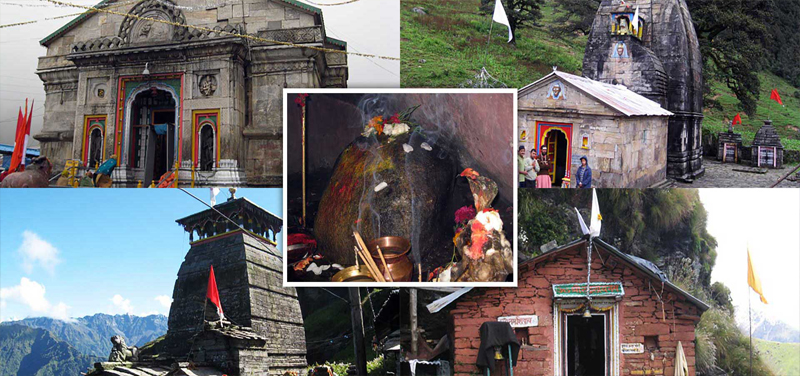The Himalayas are not merely a range of mountains; they are the abode of the gods, the cradle of ancient civilizations, and the ultimate destination for spiritual seekers. Nestled deep within the Garhwal region of Uttarakhand, India, lies one of the most sacred and challenging pilgrimages in Hinduism the Panch Kedar Yatra.
This circuit connects five ancient temples dedicated to Lord Shiva, each representing a different part of the divine body of the Buffalo he assumed to evade the Pandavas. More than just a collection of temples, the Panch Kedar is a transformative journey that weaves together epic mythology, breathtaking natural beauty, and a profound sense of spiritual endeavor.
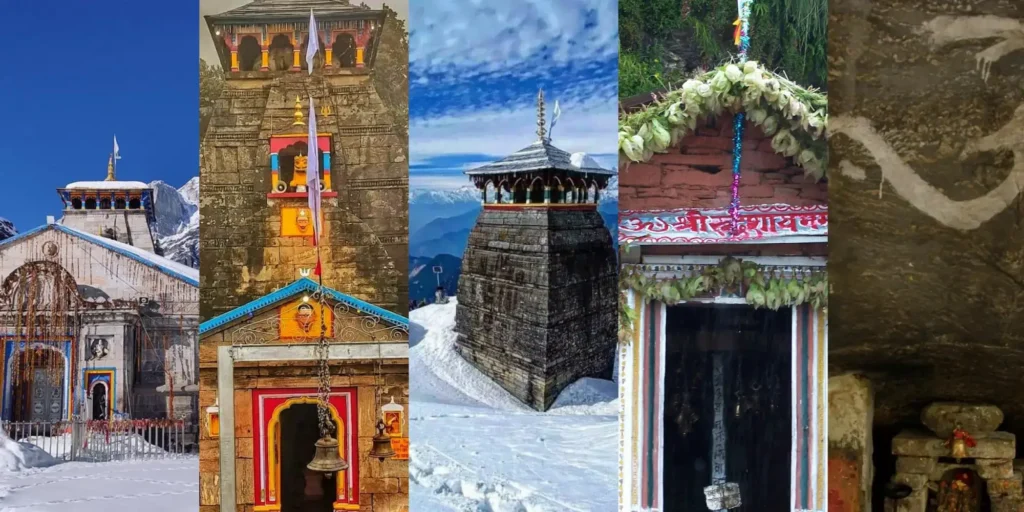
The Immutable Legend: Shiva, the Buffalo, and the Pandavas
To truly appreciate the gravity of the Panch Kedar Yatra, one must first delve into its powerful foundational legend, rooted in the epic Mahabharata. After the devastating Kurukshetra War, the victorious Pandava brothers Yudhishthira, Bhima, Arjuna, Nakula, and Sahadeva were overwhelmed by the sin of gotra hatya (killing of kin) and Brahminahatya (killing of Brahmins) committed during the battle. Seeking absolution, they handed over their kingdom to their grandson and set out to find Lord Shiva to beg for his forgiveness.
Lord Shiva, deeply displeased with the violence and bloodshed of the war, was reluctant to grant them easy pardon. To evade the Pandavas, he took the form of a Buffalo, and hid in the remote recesses of the Garhwal Himalayas. The Pandavas, however, were relentless.
Eventually, Bhima, the strongest of the brothers, spotted the peculiar Buffalo grazing near Guptkashi (which translates to ‘Hidden Kashi’). Recognizing the Buffalo as Shiva, Bhima made a desperate lunge, catching hold of the Buffalo’s tail and hind legs. The divine Buffalo, attempting to disappear into the ground, was torn asunder. As it vanished, its different body parts reappeared at five distinct locations in the Kedar Khand. The Pandavas, realizing this was Shiva’s way of finally granting them an audience, built temples at each of these five sites to venerate the scattered forms of the Lord, thereby achieving redemption.
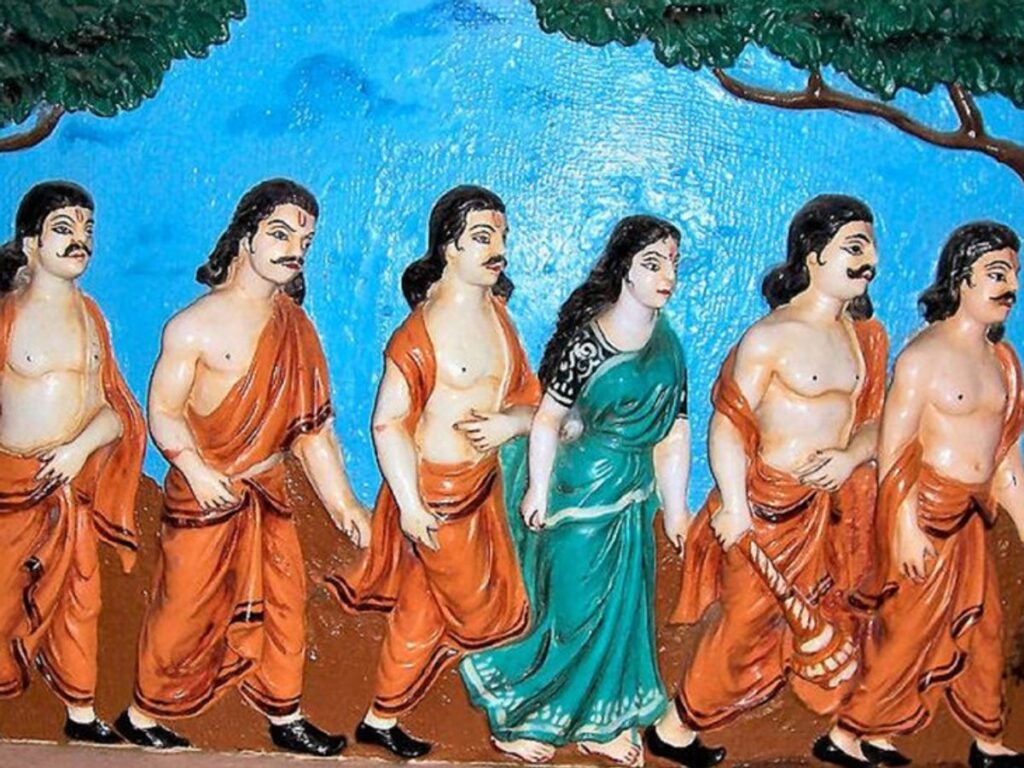
The five temples, in the traditionally accepted order of pilgrimage, are:
- Kedarnath: Where the Hump of the Buffalo emerged.
- Madhyamaheshwar: Where the Navel and Stomach surfaced.
- Tungnath: Where the Arms of the Buffalo appeared.
- Rudranath: Where the Face of Shiva manifested.
- Kalpeshwar: Where the Hair (Jata) of the Buffalo was found.
Completing the circuit is believed to cleanse a pilgrim of all sins and bring them closer to Moksha (liberation). The journey is a physical manifestation of the Pandavas’ quest for penance, offering an unparalleled blend of adventure and devotion.
Kedarnath: The Hump and The Spiritual Crown (3,583m)
The Temple of the Hump
Kedarnath, meaning ‘Lord of the Field,’ is not just the first and most prominent of the Panch Kedar; it is one of the twelve Jyotirlingas (lingams of light) and a core site of the Chota Char Dham Yatra. Its imposing stone structure stands majestically against the backdrop of the towering Kedarnath peak, on the banks of the Mandakini River.
Significance: This is where the hump of the Buffalo-form of Shiva is worshipped as a conical rock formation. The temple’s historical and spiritual resonance is immense, drawing millions of pilgrims.
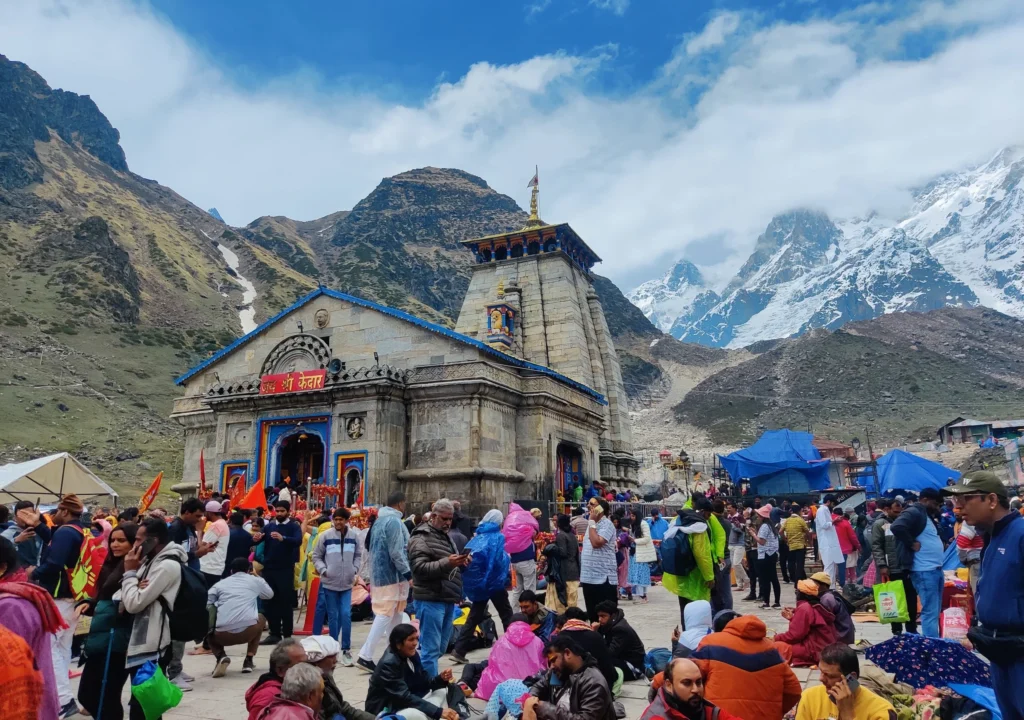
The Trek: The journey to Kedarnath is a challenging 16 to 18 km trek (depending on the route) from Gaurikund. The path, rebuilt and improved significantly after the 2013 floods, is a steep ascent that tests the physical and mental endurance of the devotee. The sheer scale of the surrounding mountains and the raw power of the landscape, often blanketed in mist or snow, lend an air of intense spiritual energy to the site.
Winter Seat: Due to heavy snowfall, the temple closes around the first week of November (after Bhai Dooj) and reopens in late April or early May. During this closure, the Utsav Murti (ceremonial idol) is shifted to the Omkareshwar Temple in Ukhimath, which serves as the winter seat of Kedarnath.
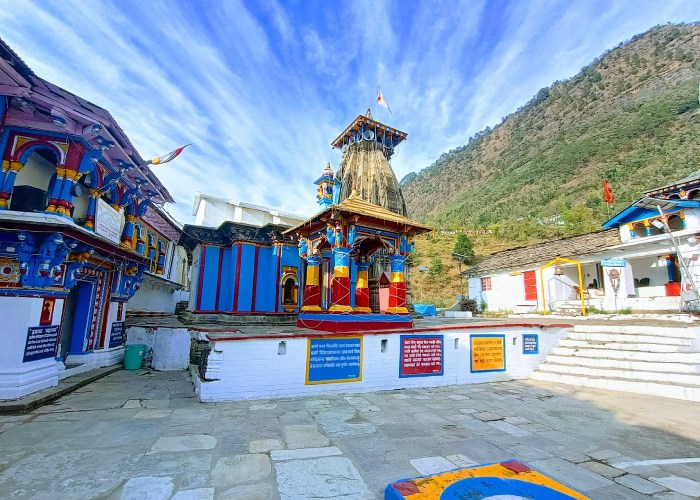
The Temple of the Navel (Madhyamāhēśvara)
Moving east from Kedarnath, the journey leads to Madhyamaheshwar, or Madmaheshwar, located in the lush, emerald-green Madmaheshwar Ganga valley, with the spectacular Chaukhamba, Kedarnath, and Neelkanth peaks forming a stunning panorama.
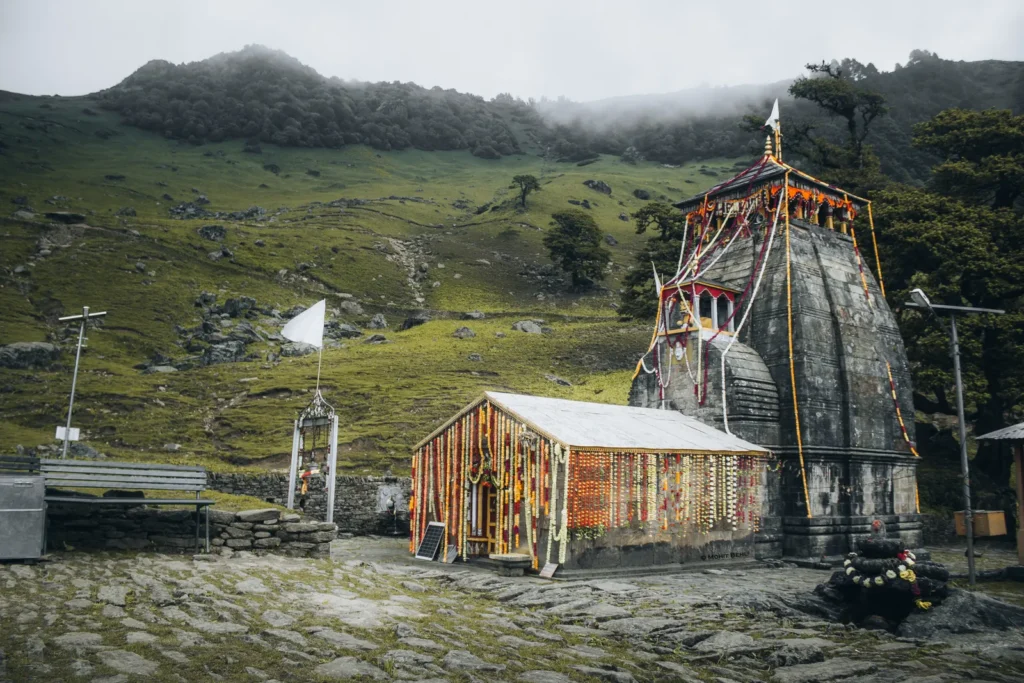
Significance: Here, the navel or middle part of the Buffalo is venerated. The temple is one of the most picturesque among the Panch Kedar, known for its serenity and quietude, often considered a place of deep reflection.
The Trek: The pilgrimage involves a moderate to difficult trek of approximately 18 to 20 km from the base village of Ransi (near Ukhimath). The trail passes through dense forests, quaint Himalayan hamlets like Gaundhar, and vast alpine meadows (bugyals), offering a profound experience of the Himalayan ecosystem. The final stretch to the temple is a gentle slope leading to the shrine nestled in the meadow.
Winter Seat: The ceremonial idol of Madmaheshwar is also shifted to the Omkareshwar Temple in Ukhimath during the six months of winter closure.
Tungnath: The Arms and The Highest Temple (3,680m)
The Temple of the Arms (Tuṅganātha)
Tungnath holds the unique distinction of being the highest Shiva temple in the world. Perched on the Chandrashila peak, its sheer altitude and breathtaking location make it a pilgrimage destination unlike any other. The region, often referred to as the ‘Mini Switzerland of India’ for its stunning meadows, is a visual spectacle.
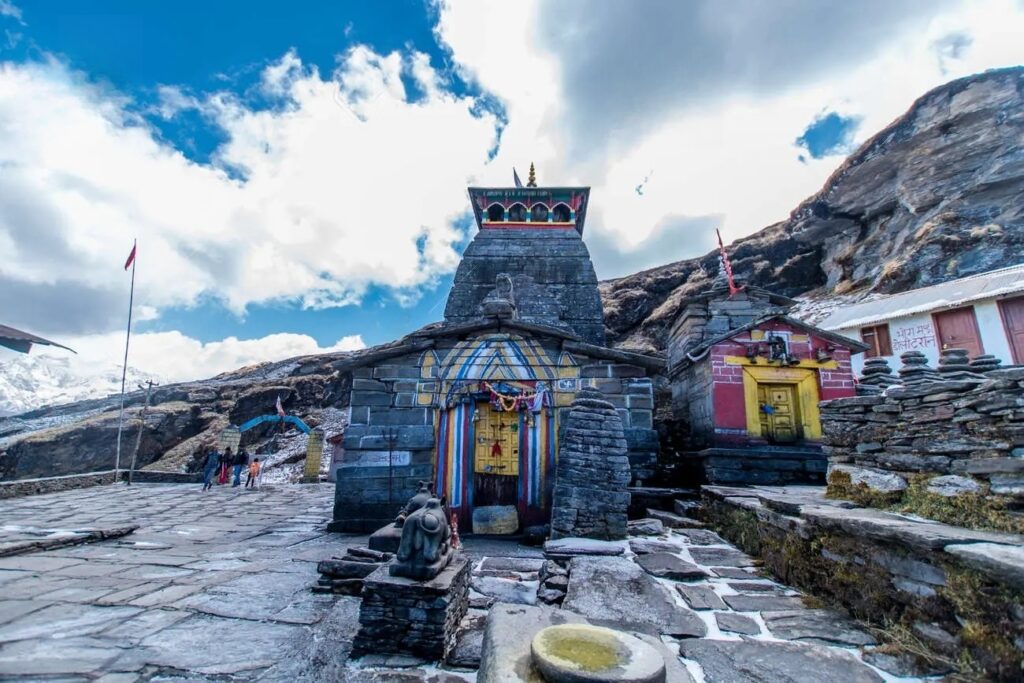
Significance: The temple is dedicated to the arms (bahu) of the Buffalo-Shiva. Despite its height, the trek is considered the shortest and one of the easiest among the Panch Kedar, making it highly accessible.
The Trek: The trek is a relatively short but steep 3.5 to 4 km from the picturesque base camp of Chopta. The well-paved trail meanders through rhododendron and pine forests, opening up to panoramic views of the entire Garhwal range, including Nanda Devi, Trishul, Neelkanth, and Kedarnath peaks. Many pilgrims extend this trek by another 1.5 km to reach the Chandrashila Summit for a spectacular 360-degree view of the sunrise over the Himalayan giants.
Winter Seat: During the winter months, the deity’s idol is ceremonially moved to the Mukkumath Temple near Duggalbitta.
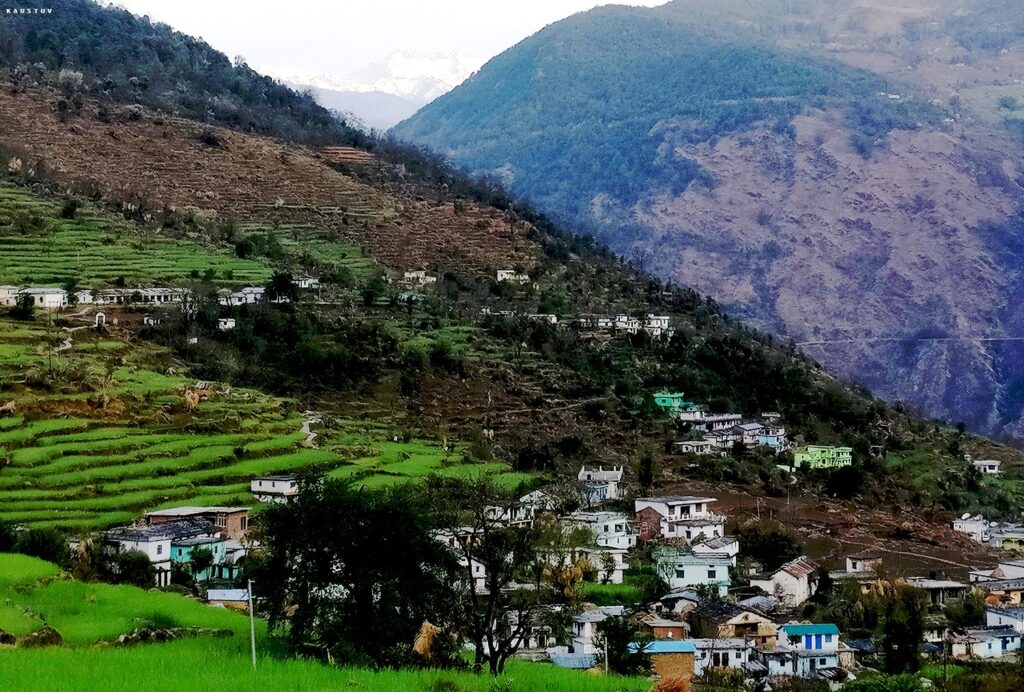
Rudranath: The Face and The Mystical Wilderness (3,600m)
The Temple of the Face (Rudranātha)
Rudranath, the ‘Angry Lord’ or ‘Lord of the Rudras,’ is arguably the most challenging and least-visited of the Panch Kedar, largely due to the rigorous trek required to reach its remote location. The temple is situated in a dense, natural setting, surrounded by vast alpine meadows and thick rhododendron forests.
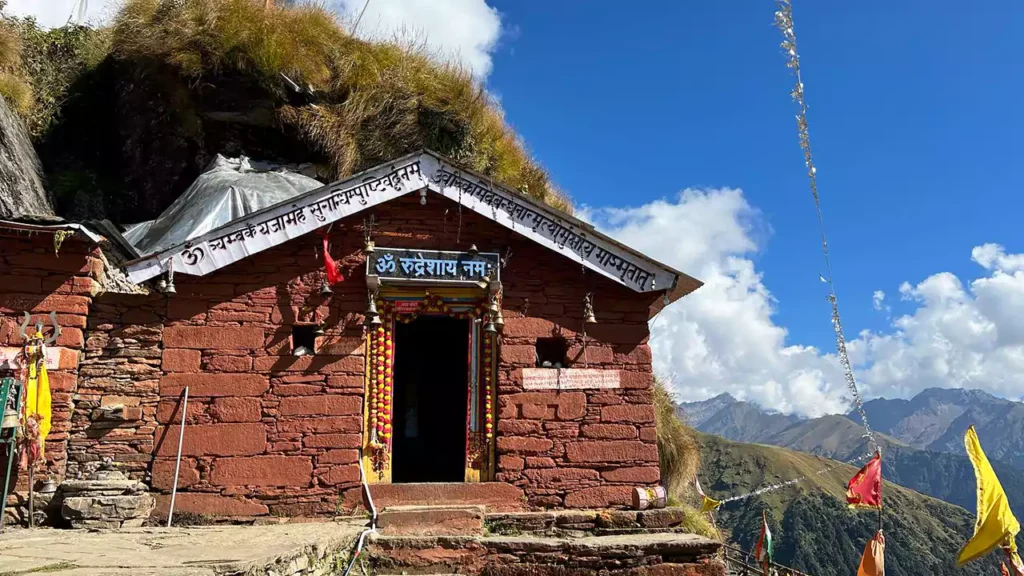
Significance: Rudranath is where the face (mukha) of the Buffalo-Shiva is worshipped. The Shiva Linga here is a natural rock face, and Lord Shiva is also venerated as Neelkanth (the blue-throated one). The area is dotted with sacred water tanks (kunds) like Surya Kund, Chandra Kund, Tara Kund, and Mana Kund.
The Trek: This is the most demanding leg of the Panch Kedar circuit. The trek distance varies significantly depending on the starting point either a 20 km strenuous trek from Sagar Village or a longer route via Mandal, taking trekkers through rough, uneven terrain, high-altitude meadows, and deep valleys. The sheer isolation and raw beauty of the location amplify the spiritual experience, demanding complete surrender to the natural and divine elements.
Winter Seat: When the high-altitude route closes, the idol of Rudranath is brought down to the Gopeshwar Temple for worship.
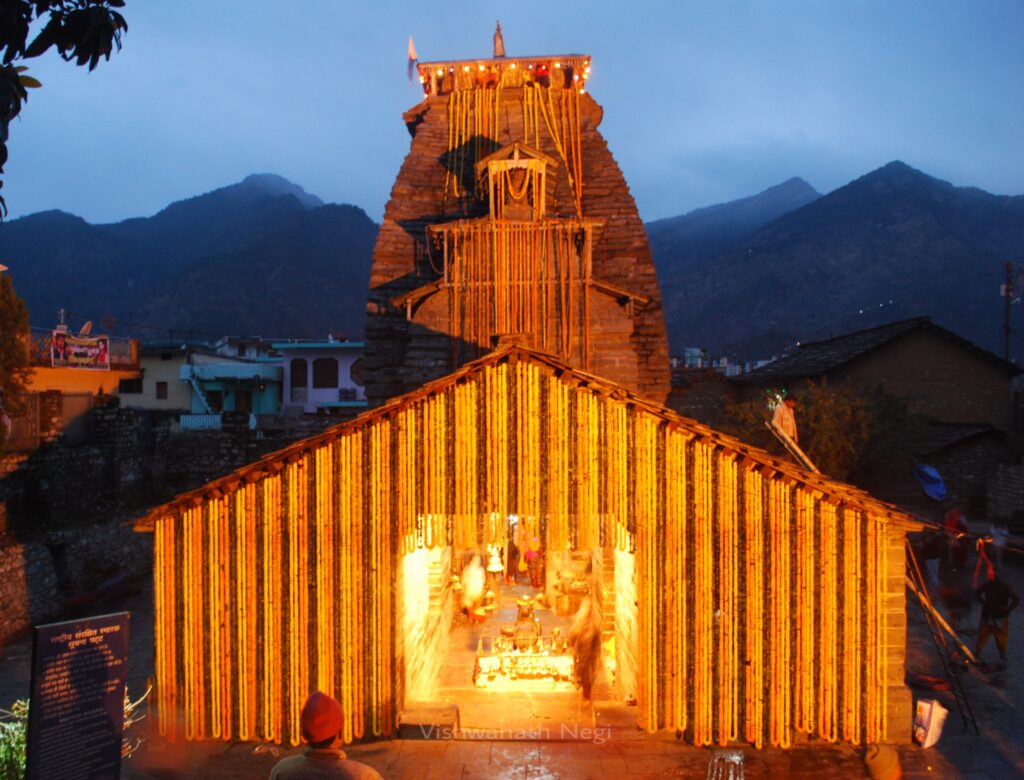
Kalpeshwar: The Hair and The Cave of Eternity (2,200m)
The Temple of the Hair (Kalapēśvara)
Kalpeshwar provides a gentle and fitting conclusion to the demanding Panch Kedar Yatra. Nestled in the serene Urgam Valley, amidst terraced fields of potatoes and apples, this is the only one of the five shrines that remains open throughout the year.
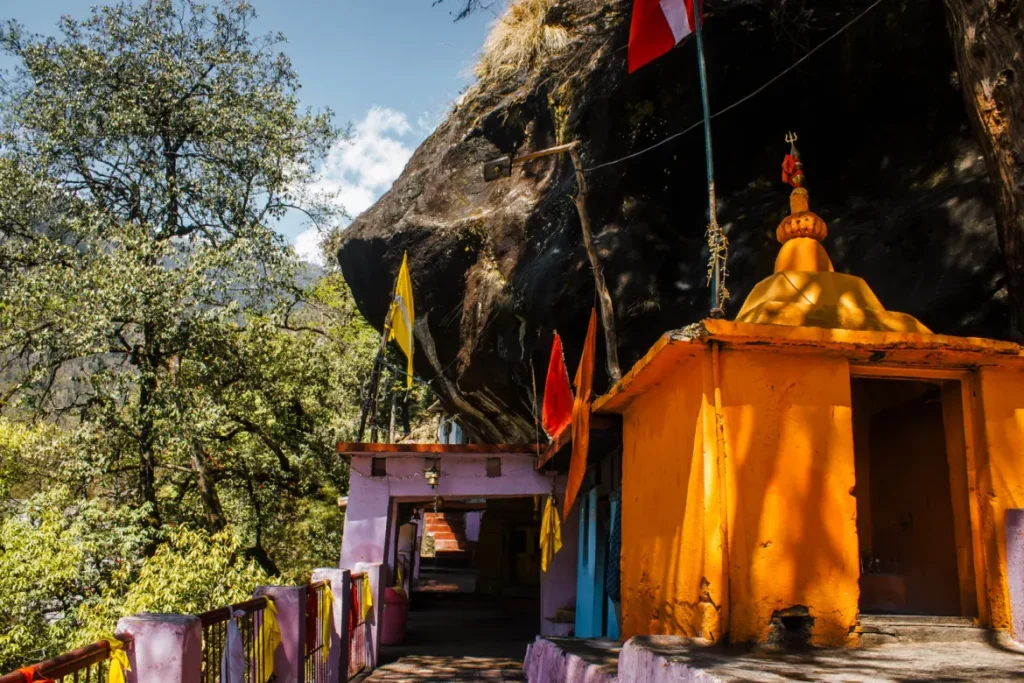
Significance: The temple, set within a cave, is where the hair (jata) of Lord Shiva is worshipped as a naturally formed rock. The cave temple’s accessibility and year-round operation symbolize the eternal presence of Shiva. It is also believed that the great sage Arghya meditated here.
The Trek: The final trek is the shortest and easiest of the entire circuit a mere 2 km trek from Urgam Village, which is reachable by road from Helang (on the Badrinath route). The path is pleasant, passing through lush greenery and offering a moment of peaceful contemplation after the rigorous journeys to the other four Kedar. Its tranquil setting offers the pilgrim a final, serene space for reflection and gratitude.
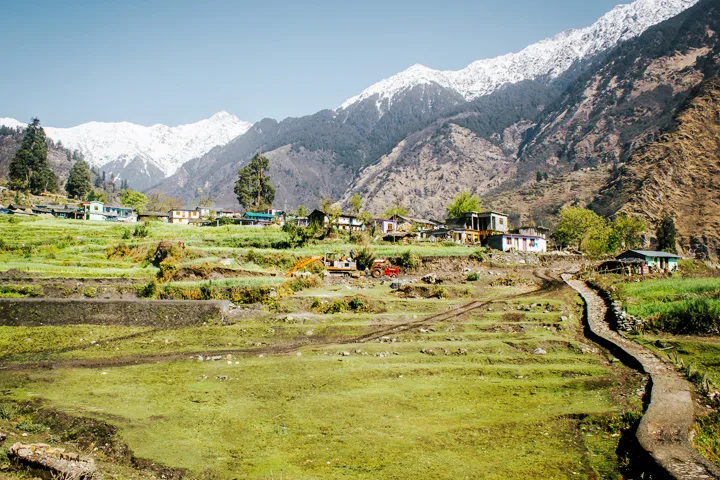
The Pilgrimage Circuit: A Testament to Faith and Endurance
The full Panch Kedar Yatra is not a weekend trip; it is an epic commitment, typically requiring a minimum of 12 to 16 days to complete, depending on the itinerary, trekking pace, and weather conditions.
Traditional Sequence: The traditional and religiously sanctioned order is Kedarnath → Madhyamaheshwar → Tungnath → Rudranath → Kalpeshwar. This sequence is believed to follow the path of the body parts of the Buffalo as they emerged from the earth.
Best Time to Visit: With the exception of Kalpeshwar, which is always open, the other four temples are accessible only for approximately six months a year: May to June and September to October. The monsoon months (July and August) are often avoided due to the high risk of landslides and treacherous trails. The post-monsoon window (September-October) is often considered the most rewarding, with clear skies, lush greenery, and stunning views of the snow-capped peaks.
Physical and Mental Preparation: The pilgrimage is physically demanding, involving a cumulative trekking distance of well over 100 kilometers across varying altitudes, from the highest point at Tungnath (3,680m) down to Kalpeshwar (2,200m). Adequate cardiovascular fitness, strength training, and proper acclimatization are non-negotiable for a safe and enjoyable journey.
Beyond the Spiritual: A Trekker’s Paradise
While the spiritual quest is the primary motivator for most, the Panch Kedar circuit also offers an unparalleled experience for the avid trekker and nature lover.
- Biodiversity: The trails cut through the heart of the Garhwal Himalayas, home to rich biodiversity, including vast rhododendron forests, Himalayan deodars, and a chance to spot rare wildlife like the Himalayan Monal pheasant and the elusive Musk Deer.
- Bugyals: The immense, velvety green alpine meadows, known locally as bugyals (especially on the Rudranath and Madhyamaheshwar routes), are a sight of pure Himalayan grandeur, carpeted with wildflowers in the summer months.
- Cultural Immersion: The Yatra passes through remote Garhwali villages like Ransi, Sagar, and Chopta, offering a glimpse into the simple, hospitable life of the mountain people, whose culture and traditions are deeply intertwined with the legends of the temples.
Conclusion: The Ultimate Himalayan Detox
The Panch Kedar Yatra is more than just a check-list of five sacred places; it is a profound tapasya an act of severe self-discipline hat connects the mortal realm with the divine. It is a journey that strips away the superficial layers of modern life, leaving the pilgrim face-to-face with the raw power of nature and the depth of their own faith.
To walk the Panch Kedar trail is to walk in the footsteps of the Pandavas, seeking redemption not just from the gods, but from oneself. Each step is a prayer, each mountain peak a silent witness to a journey of unparalleled spiritual and physical endurance. Upon its completion, the pilgrim returns, not merely having seen the temples, but having been transformed by the enduring energy of the Himalayas and the eternal presence of Lord Shiva, the Lord of the Kedar Khand. The Panch Kedar is, truly, the ultimate Himalayan detox a pilgrimage that purifies the soul and indelibly marks the heart.

